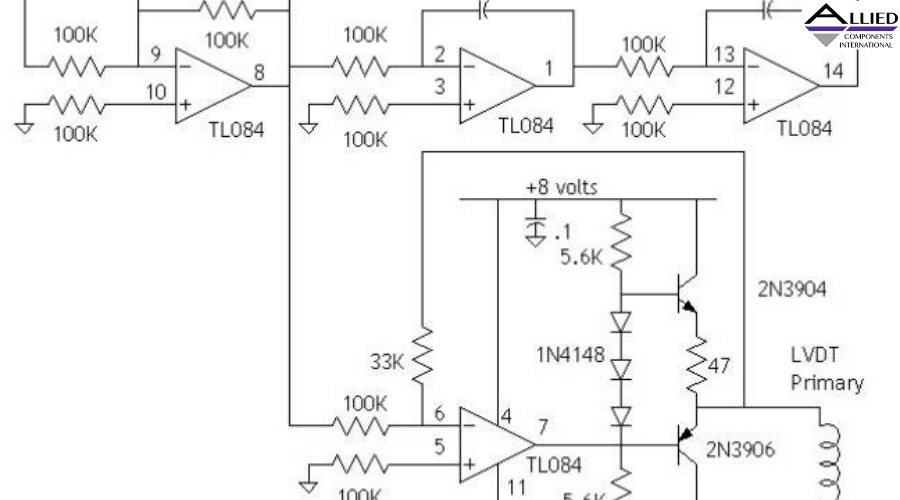Choosing Between a Rectifier-Type and a Synchronous LVDT Demodulator

There are several techniques for linear variable differential transformer or LVDT demodulation. While rectifier-type demodulation can be used, it has some inherent limitations. Read on to see how synchronous demodulation can address some of these drawbacks in LVDT applications.
Rectifier-Type Demodulator Drawbacks
The main issue with rectifier-type demodulators is ineffective noise performance. This problem is more severe when working with long cables. Additionally, the method requires 5-cable configurations and is inappropriate for long cable deployment to remote sites. Instead, synchronous demodulators would be better suited to these LVDT applications.
Synchronous Demodulation
When used in differential transformer applications, synchronous demodulation can regulate gates utilized in secondary voltage correction by utilizing the oscillator voltage. With this approach, the LVDT differential output is multiplied by the excitation signal. The output signal is a DC voltage without the second component (noise). This signal is proportional to the LVDT's core movement.
Multiplying by a Square Wave to Achieve Synchronous Demodulation
In this LVDT demodulation implementation, the output is multiplied by a square wave in synchrony with the excitation signal. A high-frequency component (noise) and a DC component are generated. However, a low-pass filter in the circuit suppresses the noise. Therefore, only the intended DC component is detected at the output.
Synchronous Demodulator Circuitry
This circuit achieves demodulation by multiplying the LVDT signal by a square wave (instead of the sinusoidal waveform). A zero-crossing detector is used to generate the excitation signal that's synchronous with the square wave. A low-pass filter elevates noise performance by keeping the output's DC component.
LVDT Synchronous Demodulators Advantages
Synchronous demodulation is better suited to differential transformer applications requiring superior noise performance. It makes it possible to incorporate a low-pass filter to get the intended signal (DC). This also means a low-bandwidth system is achievable while keeping a significant amount of the noise out of the LVDT output. Another advantage is that the synchronous demodulation circuit isn't limited to 5-wire configurations. You can implement a 4-wire LVDT too.
Other LVDT Demodulation Methods
If your primary objective is to keep the noise away and the benefit of using 4-wire configurations, you can go with synchronous demodulation. However, this technique isn't perfect as it introduces multiple concerns, such as phase shift and reliance on the excitation signal's amplitude. There are other demodulation techniques that solve these issues by incorporating ratiometric measurement and DSP-oriented circuit designs.
Synchronous LVDT demodulation is superior to a rectifier-type implementation in key areas like noise performance and the ability to work with 4-wire LVDT. If you would like to learn more about our high-quality electronic devices, visit the Allied Components International website right away. You can even order custom components based on unique circuit design specifications.


